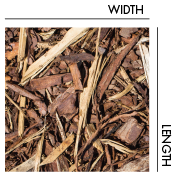

That will equal the cubic inches in the pot. For a square or rectangular pot find the cubic inches by multiplying the length by the width by the depth of the pot. Just divide the number of cubic feet (128 in the example of the above bed) by 27 to arrive at the number of cubic yards of material you need to fill the bed- in this case about 4 and 3/4 yards.įilling a pot is the same process, just smaller amounts of material and different equations. The bed is to be 2 foot deep, 16 feet long and 4 feet wide. Let's say you have a garden bed you want to buy or mix soil for. I've listed below all the conversions I have in my garden notebooks, that I hope might help.ġ dry gallon = 4.65 liquid quarts or 1.163 liquid gallonsġ dry gallon = 0.125 of a bushel, (1 bushel= 8.25 dry gal)ġ dry gallon = 18.61 cups (1 liquid gal= 16 cups)Ĭubic measurements take all three dimensions into consideration - width, length and height. It is also almost 1/2 of a bushel- (handy to know when using the bucket for mixing soil mix/fertilizer etc in bulk). 1,142 cubic inches or 0.66 cubic ft or 0.024 cubic yards or 17.16 DRY quarts or about 79 cups. That would be filled to the brim with soil, so it's actually a little less since the soil line is always a few inches down, probably closer to 4.25 gallons.Ī 5 gallon bucket filled with 4.25 DRY gallons is also about. grow my smaller cukes, peas, small tomatoes, chinese cabbage etc in them)- when you calculate for DRY volume is really only 4.29 gallons. To give you an example- the ubiquitous and popular 5 gallon bucket ( I love em. But you need to know how many DRY gallons of soil/mix it holds. The largest part of the problem seems to be that the volume measurements are figured in liquid gallons, which is fine if you are wondering how many gallons of water your pot would hold. The pots I've bought at the big box stores and wallyworld have labels on them that are obviously totally wrong as to volume size (usually marked in qts). What they call a 5 gallon for example could be endless different sizes, bigger on top, smaller on bottom, 'squat' pots, tall pots and the like.

Soil volume calculator for pots how to#
Mike34, I've seen many posts like your recent one- asking about a particular pot and how to figure out the volume size (yours was how many gallons your pot was to be able plant your larger tomato in) and I must say I have struggled for years with the same issue.įor 40 years I've grown most of my vegetables in pots of all shapes and sizes aquired second hand from a landscaper friend.įirst I learned to NEVER trust what the pot says on the pot label, or on the pot itself or even from the manufacturer of that pot (I've looked them up on the web to try and determine the real volume sizes).


 0 kommentar(er)
0 kommentar(er)
